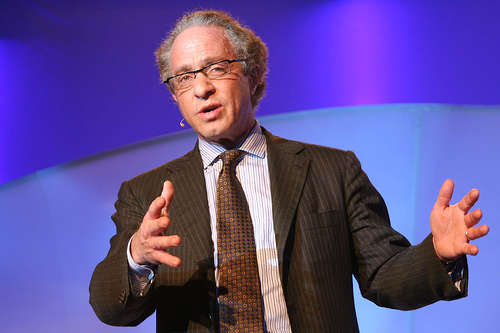
When I read what Ray Kurzweil said about the future, I was just awed! I mean, coming from somebody else, it would seem ludacris (even from him, I find it really hard to believe), but c’mon, the man is one of the best futurists we have, so he HAS to know what he’s talking about. According to him, in his really optimistic view, many of the world’s current problems will be solved way sooner than 50 years.For example, if you’re worried about green gas emissions, fear no more! In 5 years, he claims solar power will be cost competitive with fossil fuels and within 20 years all of our energy will come from clean sources. That really would be nice, but could it really happen ?? Wait, that’s just the beginning. Having problems sticking to a diet or losing weight? In less than 10 years, he says, there will be a pill that will allow you to eat whatever you want without gaining weight! Sounds too good to be true? Could be, but the thing is that even critics agree that he is by no means your average sci-fi fantasits. In fact, he has just enought credibility that the National Academy of Engineering published his view of solar energy.What’s even more surprising for me (at least) is what he predicted about aging.
Well, fasten your seat belts: in 15 years, your life expectancy will rise every year faster than you are aging. Yeah, that means that your chances of dying get slimmer and slimmer every year, until about 50 years from now, when humans (and perhaps even machines) start evolving into everliving beings. Could this actually happen ? I have no idea, and I’m not sure how many people have – not that many, anyway. During the years he mande some predictions that awed the world by their accuracy and seemingly impossible odds of happening (such as the explosive growth of the Internet in the 1990s and a computer chess champion by 1998; with that he was off by a year – Deep Blue won in 1997).
Also, 20 years ago he predicted that “early in the 21st century” blind people would be able to read anything anywhere using a handheld device. In 2002 he actually narrowed the date to sometime in 2008. On thursday night at a festival, he pulled out a new gadget as big as your average cell phone, that had absolutely no problem reading out loud the text from a science magazine.“Certain aspects of technology follow amazingly predictable trajectories,” he said, and showed a graph of computing power starting with the first electromechanical machines more than a century ago. At first the machines’ power doubled every three years; then in midcentury the doubling came every two years (the rate that inspired Moore’s Law); now it takes only about a year.“My colleague Francis Crick used to say that God is a hacker, not an engineer,” Dr. Ramachandran said. “You can do reverse engineering, but you can’t do reverse hacking.”
“Scientists imagine they’ll keep working at the present pace,” he told NY Times after his speech. “They make linear extrapolations from the past. When it took years to sequence the first 1 percent of the human genome, they worried they’d never finish, but they were right on schedule for an exponential curve. If you reach 1 percent and keep doubling your growth every year, you’ll hit 100 percent in just seven years.”


